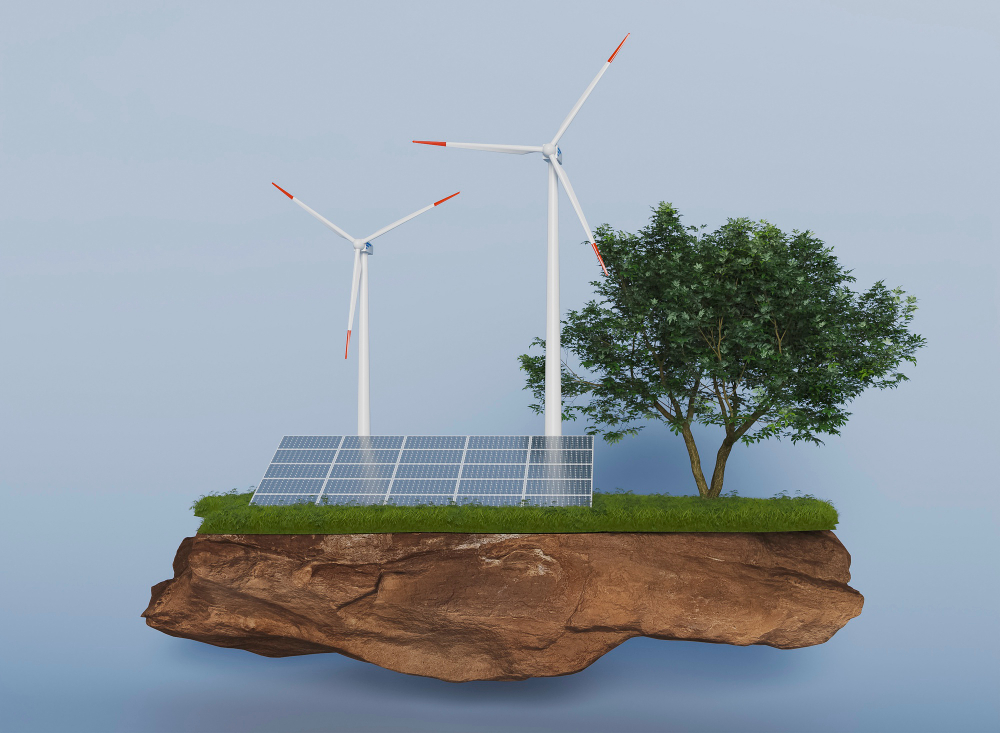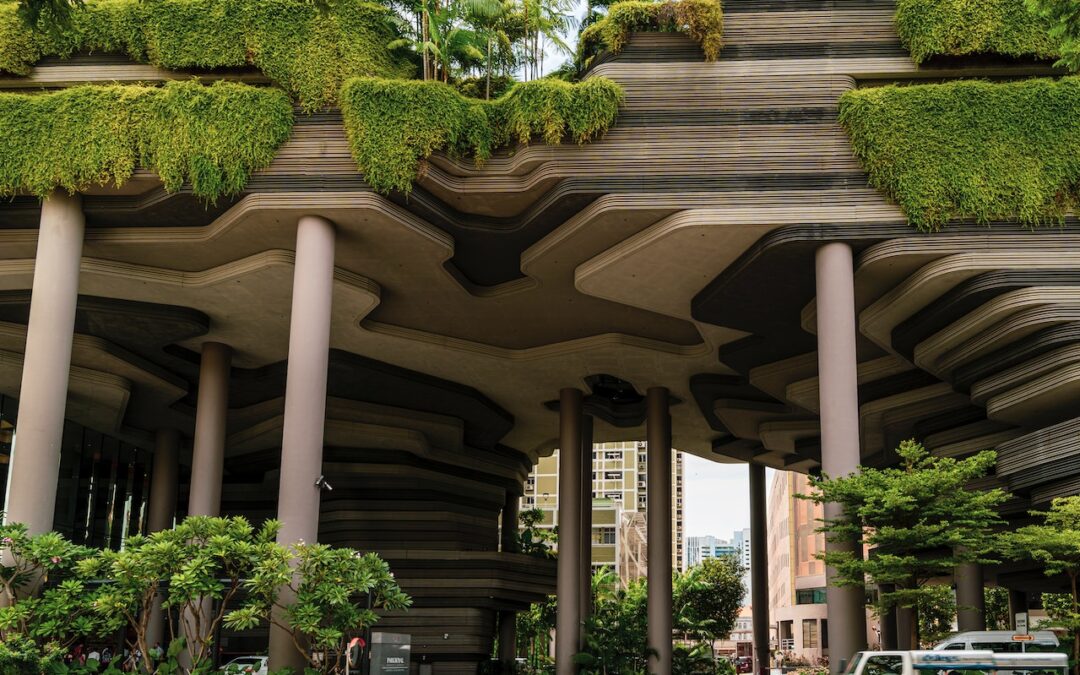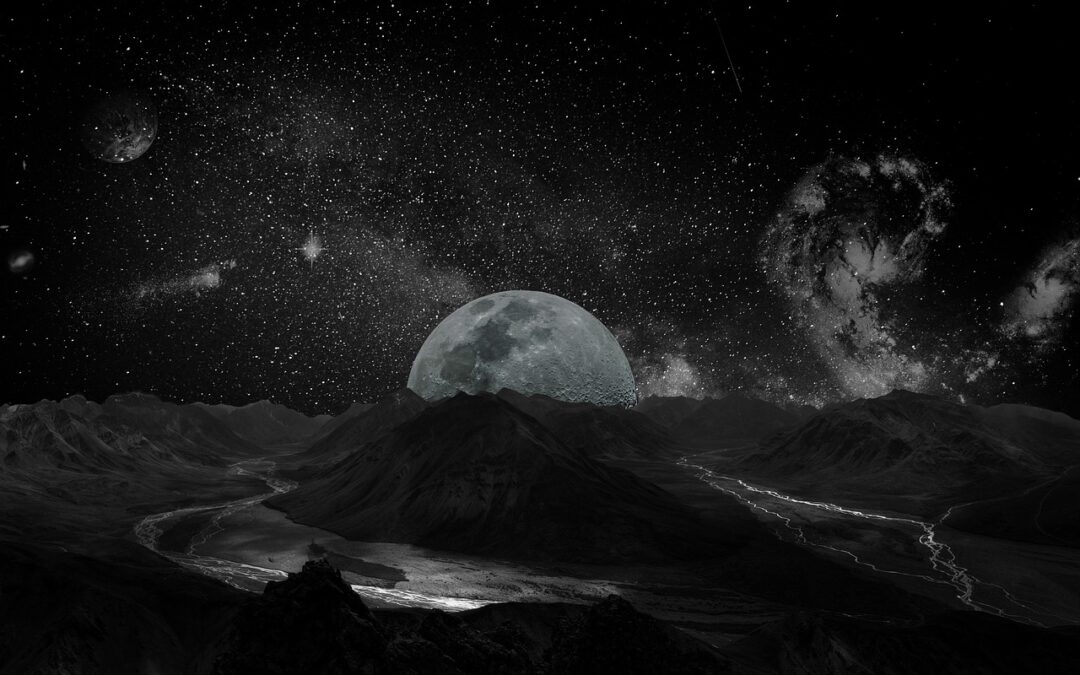Embark on a journey through the fascinating realm of nature’s hidden wonders! From flaming craters to underwater crop circles, our planet never ceases to amaze with its bizarre natural phenomena. In this article, we will unveil 20 captivating facts about these extraordinary occurrences that are rarely known. Prepare to be astounded as we delve into the details of how these phenomena were discovered and the mysteries that surround them. Get ready to witness nature’s enchanting and awe-inspiring side!
Table of Contents
- The Blood Falls of Antarctica appear to ooze red liquid like a scene from a horror movie.
- The Giant’s Causeway in Northern Ireland is a spectacular formation of hexagonal basalt columns.
- Sailing stones in California’s Death Valley mysteriously move across the desert floor, leaving long trails behind them.
- The Catatumbo Lightning in Venezuela is a mesmerizing atmospheric phenomenon that produces an almost continuous display of lightning.
- The Door to Hell in Turkmenistan is a fiery crater that has been burning continuously for over 50 years.
- The Morning Glory Clouds in Australia are enormous, tube-shaped clouds that can stretch for kilometres.
- The Great Blue Hole in Belize is a massive underwater sinkhole that captivates divers with its stunning beauty and unique ecosystem.
- The Boiling River in the Amazon Rainforest reaches temperatures hot enough to boil small animals.
- The Fairy Circles in the Namib Desert create a fascinating pattern of barren patches amidst the sandy landscape.
- The Green Flash is a rare optical phenomenon that briefly paints the horizon with vibrant green hues during sunset or sunrise.
- The Underwater Crop Circles created by pufferfish in Japan leave intricate and geometric patterns on the ocean floor.
- The Brinicles, also called “Icy Fingers of Death,” are unique structures that form underwater and freeze everything in their path.
- The Upside-Down Icebergs in Antarctica reveal a vibrant and colourful world beneath the water’s surface.
- The Fire Whirls, also known as Fire Tornadoes, are spinning vortexes of flames that can occur during wildfires.
- The Lenticular Clouds, often mistaken for UFOs, are lens-shaped clouds that form near mountains and create surreal atmospheric displays.
- The Black Sun in Denmark showcases mesmerizing formations of starlings that create stunning, ever-changing dark patterns in the sky.
- The Bioluminescent Bay in Puerto Rico glows brilliantly at night, thanks to microscopic organisms that emit light.
- The Petrifying Well in England has the peculiar ability to turn objects into stone over time.
- The Singing Sand Dunes in various locations around the world produce a unique sound when sand grains rub against each other.
- The Moeraki Boulders in New Zealand are colossal spherical stones scattered along the beach, captivating visitors with their perfect symmetry.
The Blood Falls of Antarctica appear to ooze red liquid like a scene from a horror movie.
Details: Deep within the icy expanse of Antarctica’s Taylor Glacier, there is a mesmerizing natural spectacle known as the Blood Falls. Contrary to its sinister name, the “blood” that flows from the glacier is not actually blood but a water discharge tinted with iron oxide. The water emerges from a subglacial lake and cascades down the glacier, creating a striking contrast against the white ice.
How it was discovered: In 1911, during an expedition led by Australian geologist Griffith Taylor, the Blood Falls were first encountered. It wasn’t until the 2000s that scientists unveiled the source and mechanism behind this peculiar phenomenon using radar and drilling techniques.
The Giant’s Causeway in Northern Ireland is a spectacular formation of hexagonal basalt columns.
Details: Along the rugged coast of County Antrim in Northern Ireland lies the awe-inspiring Giant’s Causeway. This UNESCO World Heritage site features around 40,000 interlocking basalt columns, most of which are hexagonal in shape. These stunning formations are the result of volcanic activity that occurred over 50 million years ago when lava rapidly cooled and contracted, causing fractures and shaping the iconic columns we see today.
How it was discovered: The Giant’s Causeway has been a subject of fascination for centuries. It gained widespread attention when its unique geological features were described in detail by an Irish scientist named Sir Richard Bulkeley in 1693.
Sailing stones in California’s Death Valley mysteriously move across the desert floor, leaving long trails behind them.
Details: In the arid wilderness of California’s Death Valley, a peculiar phenomenon occurs involving rocks that seem to travel across the desert floor on their own. These rocks, aptly named “sailing stones” or “moving rocks,” leave behind visible trails in the dry mud or playa. The movement of these rocks has puzzled scientists for years, with theories ranging from strong winds and ice sheets to a combination of factors involving ice and wind.
How it was discovered: The existence of sailing stones was first documented in the early 20th century, but it wasn’t until the 1940s that a geologist named Dr. Allan Cook initiated systematic studies to understand the mysterious movement. Later scientific investigations using GPS and time-lapse photography shed more light on this intriguing natural phenomenon.
The Catatumbo Lightning in Venezuela is a mesmerizing atmospheric phenomenon that produces an almost continuous display of lightning.
Details: Nestled near Lake Maracaibo in Venezuela, the Catatumbo Lightning is a breathtaking display of nature’s power. This unique natural phenomenon occurs when atmospheric conditions align, leading to the development of thunderclouds that produce an extraordinary amount of lightning. The lighting can be so intense that it illuminates the night sky for up to 10 hours per day and can be seen from miles away.
How it was discovered: The Catatumbo Lightning has been known to the locals for centuries, but it gained international attention when it was officially recognized as the world’s largest single generator of tropospheric ozone in 2015.
The Door to Hell in Turkmenistan is a fiery crater that has been burning continuously for over 50 years.
Details: Located in the Karakum Desert of Turkmenistan, the Darvaza Gas Crater, better known as the Door to Hell, is an otherworldly sight. This large crater, measuring about 70 meters in diameter, was created during a Soviet drilling mishap in 1971. To prevent the spread of methane gas, the decision was made to ignite it, expecting the fire to burn off in a matter of weeks. Surprisingly, the crater has been burning ever since, captivating visitors with its mesmerizing flames and the eerie glow that lights up the desert night.
How it was discovered: The exact circumstances of the Door to Hell’s discovery are not well-documented, but it is believed that geologists stumbled upon it while conducting surveys in the area following the drilling incident.
The Morning Glory Clouds in Australia are enormous, tube-shaped clouds that can stretch for kilometres.
Details: The Morning Glory Clouds, often seen in the Gulf of Carpentaria in Northern Australia, are a breathtaking meteorological phenomenon. These elongated clouds can extend for hundreds of kilometres in length, resembling rolling tubes or giant sausages in the sky. The clouds are formed by a unique combination of atmospheric conditions, including a stable layer of air, wind patterns, and the presence of a nearby mountain range.
How it was discovered: The Morning Glory Clouds were first brought to scientific attention by glider pilots who were able to ride the uplift along the cloud front, gaining extended periods of flight. The local indigenous people of the region have known about this phenomenon for generations.
The Great Blue Hole in Belize is a massive underwater sinkhole that captivates divers with its stunning beauty and unique ecosystem.
Details: Located off the coast of Belize, the Great Blue Hole is a natural wonder that beckons scuba divers from around the world. This perfectly circular sinkhole stretches over 300 meters in diameter and plummets to a depth of approximately 125 meters. Its mesmerizing deep blue colour and intricate underwater formations, including stalactites and stalagmites, make it a diver’s paradise. The Great Blue Hole is part of the Belize Barrier Reef Reserve System, a UNESCO World Heritage site.
How it was discovered: The Great Blue Hole gained prominence when it was explored and documented by legendary marine biologist Jacques Cousteau and his team in the early 1970s.
The Boiling River in the Amazon Rainforest reaches temperatures hot enough to boil small animals.
Details: Hidden deep within the Amazon Rainforest in Peru, there exists a geothermal wonder known as the Boiling River. This natural hot spring, called Shanay-Timpishka in the local language, can reach scorching temperatures of up to 93 degrees Celsius (200 degrees Fahrenheit). The river’s steaming waters are so hot that they can cause harm to animals that accidentally fall into its course.
How it was discovered: The Boiling River was discovered by Andrés Ruzo, a geophysicist and National Geographic Explorer, who heard rumours about the river’s existence from the local people and embarked on a journey to investigate its authenticity.
The Fairy Circles in the Namib Desert create a fascinating pattern of barren patches amidst the sandy landscape.
Details: Scattered across the arid landscape of the Namib Desert in southern Africa, the Fairy Circles present a mesmerizing and enigmatic sight. These circular patches, ranging from a few meters to several meters in diameter, are devoid of vegetation and stand out against the surrounding sandy terrain. Their formation remains a subject of scientific debate, with theories ranging from underground termite activity to water distribution patterns.
How it was discovered: The Fairy Circles have long been known to the indigenous Himba people of the region. However, it wasn’t until the early 1970s that they caught the attention of researchers and gained recognition beyond the local community.
The Green Flash is a rare optical phenomenon that briefly paints the horizon with vibrant green hues during sunset or sunrise.
Details: For those lucky enough to witness it, the Green Flash is a fleeting burst of vivid green light that appears just as the sun disappears below or emerges from the horizon during sunrise or sunset. This rare atmospheric phenomenon occurs due to the refraction of sunlight, causing different colours to separate, and green light to dominate for a split second. It is most commonly observed in coastal areas with unobstructed views of the horizon.
How it was discovered: The Green Flash has been documented for centuries, with various accounts from sailors and seafarers. However, it was French author Jules Verne who popularized the phenomenon through his novel “Le Rayon Vert” (The Green Ray) in 1882.
The Underwater Crop Circles created by pufferfish in Japan leave intricate and geometric patterns on the ocean floor.
Details: Off the coast of Japan, male pufferfish exhibit extraordinary behaviour during mating season. They tirelessly work to create intricate and perfectly symmetrical geometric patterns on the sandy ocean floor, known as Underwater Crop Circles. These patterns are meticulously crafted by the pufferfish using their fins and bodies as they swim and dig. The purpose of these patterns is to attract female pufferfish for mating.
How it was discovered: The underwater crop circles were first discovered and studied by marine biologist Yoji Okata in 1995, who was fascinated by the mysterious and delicate formations on the ocean floor.
The Brinicles, also called “Icy Fingers of Death,” are unique structures that form underwater and freeze everything in their path.
Details: Brinicles are captivating ice formations that occur when very cold, dense saltwater sinks through less dense seawater, creating an icy plume that extends downward. As this plume descends, it freezes the surrounding seawater, including any organisms or objects in its path. These “Icy Fingers of Death” are like underwater icicles, freezing everything they touch.
How it was discovered: Brinicles were first observed and filmed by a BBC film crew in the late 1990s during an expedition to Antarctica. The footage unveiled this mesmerizing yet deadly phenomenon to the world.
The Upside-Down Icebergs in Antarctica reveal a vibrant and colourful world beneath the water’s surface.
Details: Antarctica is known for its majestic icebergs, but some of them harbour a remarkable secret. When an iceberg flips over, exposing its previously submerged underside, it reveals an array of vibrant colours. The underside of an iceberg often appears vivid blue or green due to the compression of ice and the exclusion of air bubbles. This dazzling display offers a glimpse into the hidden beauty of the iceberg world.
How it was discovered: Scientists and explorers in Antarctica have encountered upside-down icebergs for decades, but the captivating colours and beauty of these formations gained wider recognition through stunning photographs and documentaries.
The Fire Whirls, also known as Fire Tornadoes, are spinning vortexes of flames that can occur during wildfires.
Details: Fire whirls, or fire tornadoes, are mesmerizing and dangerous phenomena that can occur under specific conditions during wildfires. These swirling vortexes of flames are formed when intense heat and wind interact, creating a spinning column of fire that resembles a tornado. Fire whirls can reach impressive heights, generate their own wind, and cause rapid fire spread, making them a significant hazard during wildfires.
How it was discovered: Fire whirls have been observed and documented by firefighters and scientists who study wildfires. Their understanding of fire behaviour and meteorological conditions has allowed for a better comprehension of how fire whirls form and behave.
The Lenticular Clouds, often mistaken for UFOs, are lens-shaped clouds that form near mountains and create surreal atmospheric displays.
Details: Lenticular clouds are stationary, lens-shaped clouds that often form near mountains or other prominent landforms. These clouds are a result of moist air flowing over the land feature, creating a wave-like pattern in the atmosphere. Lenticular clouds can appear like hovering saucers or stacked discs, leading to frequent mistaken UFO sightings. Their smooth and distinct shapes, along with vibrant colours during sunrise or sunset, contribute to their otherworldly appearance.
How it was discovered: Lenticular clouds have been observed and documented for centuries. They have long fascinated and intrigued people, with reports and artistic representations dating back to ancient times.
The Black Sun in Denmark showcases mesmerizing formations of starlings that create stunning, ever-changing dark patterns in the sky.
Details: Every year, in Denmark’s marshlands, an extraordinary natural spectacle known as the Black Sun takes place. It involves thousands of starlings gathering together in massive flocks and performing intricate aerial manoeuvres. The birds’ synchronized flight creates mesmerizing patterns that darken the sky, resembling a swirling and undulating black sun. This phenomenon is a display of both beauty and the birds’ collective behaviour.
How it was discovered: The Black Sun has long been observed and celebrated by locals in Denmark. It gained international recognition as photographers and nature enthusiasts captured the stunning phenomenon and shared it with the world.
The Bioluminescent Bay in Puerto Rico glows brilliantly at night, thanks to microscopic organisms that emit light.
Details: The Bioluminescent Bay, also known as Mosquito Bay, in Puerto Rico is a natural wonder that enchants visitors. The water in the bay glows with ethereal blue-green light, creating a magical and luminescent experience. This captivating phenomenon is caused by the presence of bioluminescent microorganisms, such as dinoflagellates, which emit light when disturbed.
How it was discovered: The bioluminescent bay has been known to the local community for generations. Its true beauty and scientific significance were brought to the attention of the wider world through scientific research and the exploration of the bay by scientists and nature enthusiasts.
The Petrifying Well in England has the peculiar ability to turn objects into stone over time.
Details: The Petrifying Well, located in Knaresborough, England, is a natural curiosity that has fascinated visitors for centuries. The water that flows from the well contains a high concentration of minerals, particularly calcium carbonate. When objects are immersed in the water and allowed to dry, they gradually become encrusted with minerals, eventually transforming into stone-like formations.
How it was discovered: The Petrifying Well has been known and visited since ancient times. Its petrifying properties were observed and utilized by locals and early visitors who were captivated by the unusual process of objects turning into stone.
The Singing Sand Dunes in various locations around the world produce a unique sound when sand grains rub against each other.
Details: In certain desert regions, such as the deserts of Morocco, China, or the United States, there are sand dunes that “sing” or emit peculiar noises when disturbed. As sand grains slide down the dunes or when the wind blows across the surface, it creates vibrations that generate a low-pitched hum or musical tone, giving rise to the phenomenon known as Singing Sand Dunes.
How it was discovered: Singing Sand Dunes have been observed and documented for centuries, with references in ancient texts and folklore. Explorers and scientists have continued to investigate this phenomenon, seeking to understand the precise mechanisms that produce distinctive sounds.
The Moeraki Boulders in New Zealand are colossal spherical stones scattered along the beach, captivating visitors with their perfect symmetry.
Details: Along the coast of Koekohe Beach in New Zealand, lies a collection of mysterious spherical stones known as the Moeraki Boulders. These large boulders, some measuring up to three meters in diameter, are perfectly rounded and scattered along the shoreline. Their smooth surfaces and symmetrical shapes make them appear as though they were crafted by skilled artisans.
How it was discovered: The Moeraki Boulders have long been known to the local Māori people, who hold cultural significance for these stones. Their prominence in the global arena increased when they gained recognition as a natural landmark and became a popular tourist attraction.













0 Comments